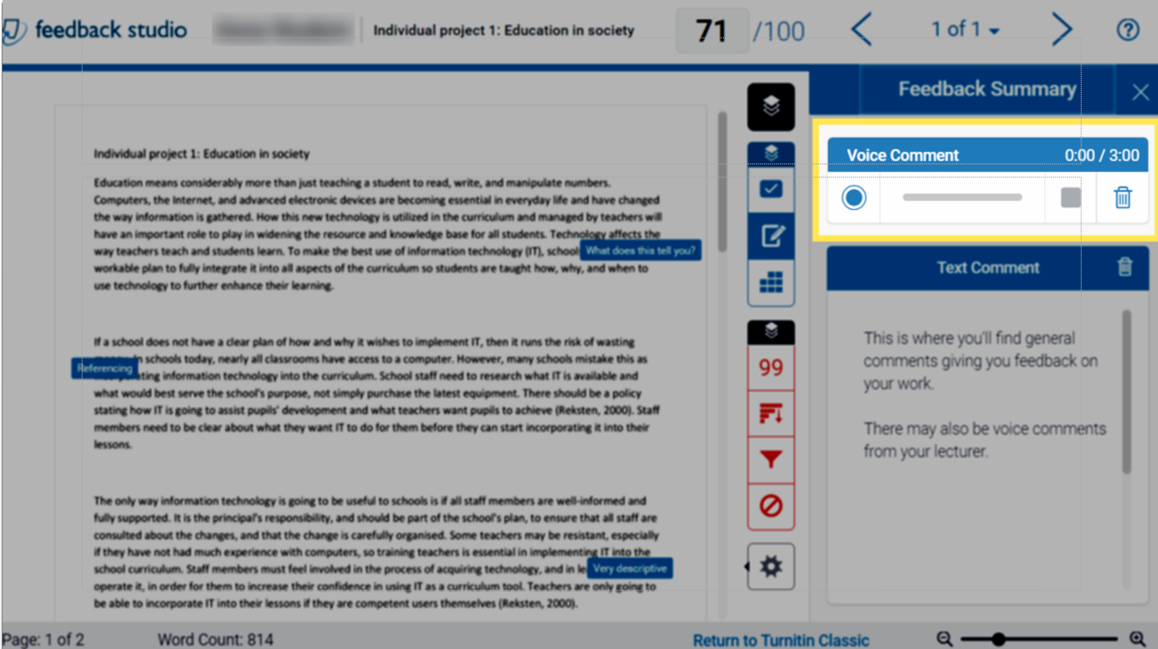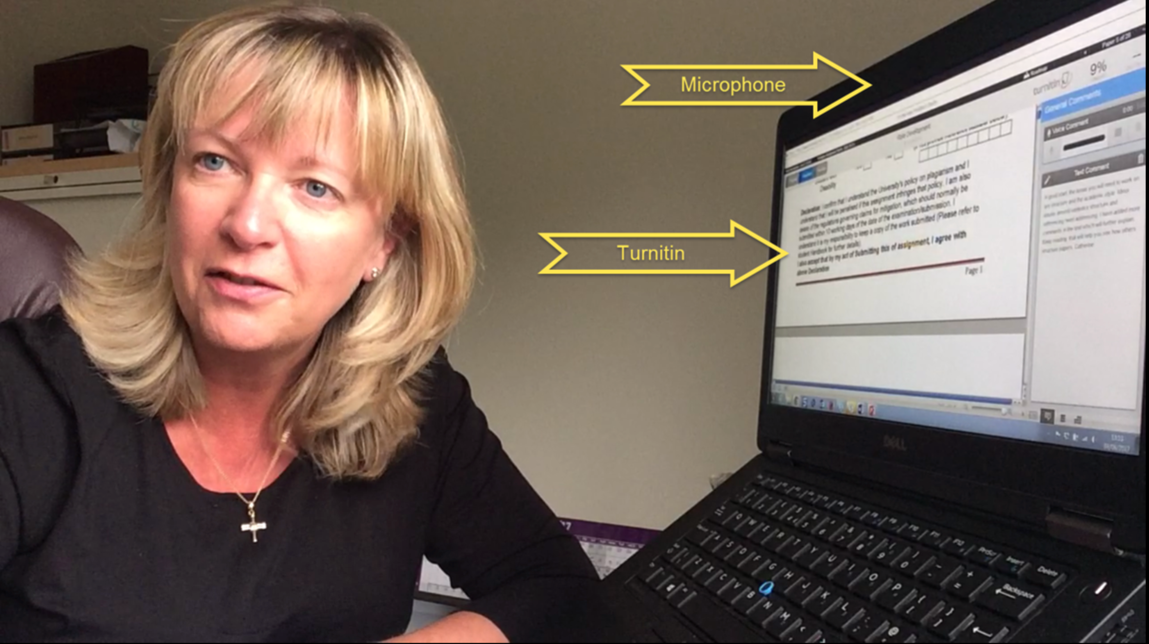 Lecturers from across the disciplines at UWL are exploring the use of recorded spoken feedback (audio feedback) to supplement written feedback, or to replace written feedback entirely, in an attempt to increase student engagement with the feedback on their work and to support learning. Students have reacted favorably, lecturers have found it can provide more nuanced and sensitive feedback, and external examiners have responded positively.
Lecturers from across the disciplines at UWL are exploring the use of recorded spoken feedback (audio feedback) to supplement written feedback, or to replace written feedback entirely, in an attempt to increase student engagement with the feedback on their work and to support learning. Students have reacted favorably, lecturers have found it can provide more nuanced and sensitive feedback, and external examiners have responded positively.
Research has shown that students are up to 10 times more likely to open audio files compared to collecting written feedback in person (Lunt and Curran, 2010).
In some cases, audio feedback can be more effective than written feedback (Morris and Chikwa, 2016) for conveying nuance, increasing feelings of involvement, increasing perception that the instructor cares more about the students (Ice et al., 2007) and maintaining the nurturing attitude fostered by the teacher in the classroom (Still, 2006).
What’s it like to provide spoken feedback?
In the College of Nursing, Midwifery and Healthcare, Catherine Lynch, Senior Lecturer, uses recorded spoken feedback with her students on the MSc Advanced Practice:
Gemma Wilson and Kelly Kinsella are Catherine’s students. They respond to listening to recorded spoken feedback on their work.
In the School of Human and Social Sciences, Tricia Ayre, Senior Lecturer, uses audio feedback with her students on the BSc (Hons) Social Work:

Feedback from Tricia’s students to receiving recorded spoken feedback
Feedback can improve a student’s confidence, self-awareness and enthusiasm for learning (Yorke, 2002).
In the London College of Music, Paul Harvard, Senior Lecturer, uses spoken feedback with his students on the BA (Hons) Acting:

Feedback from Paul’s students to receiving recorded spoken feedback
How to get started with providing audio feedback
Audio feedback is not new; educators have been providing it for decades via cassette tapes and electronic audio files. Recently, the process has become more streamlined and spoken comments can be recorded digitally, straight into familiar software such as Turnitin or Panopto.

Turnitin’s Voice Comment feature allows you to record 3 mins of spoken feedback

Catherine Lynch uses the built-in microphone on her laptop to record the spoken feedback on student work, through Turnitin
If you’d like to discuss this further, please contact your academic developer in technology-enhanced learning in INSTIL.
Author: Anna Armstrong is an Academic Developer in Technology-Enhanced Learning at the University of West London.
References
Ice, P., Curtis, R., Phillips, P. and Wells, J. (2007) Using Asynchronous Audio Feedback to Enhance Teaching Presence and Students’ Sense of Community., Journal of Asynchronous Learning Networks, 11(2), pp. 3-25.
King, D., McGugan, S. and Bunyan, N. (2008) Does it makes a difference? Replacing text with audio feedback, Practice and Evidence of Scholarship of Teaching and Learning in Higher Education, 3(2), pp. 145-163.
Lunt, T. and Curran, J. (2010) Are you listening please? The advantages of electronic audio feedback compared to written feedback, Assessment & Evaluation in Higher Education, 35(7), pp. 759-769.
Morris, C. and Chikwa, G. (2016) Audio versus written feedback: Exploring learners’ preference and the impact of feedback format on students’ academic performance, Active Learning in Higher Education, 17(2), pp. 125-137.
Still, B. (2006) Talking to Students, Journal of Business and Technical Communication, 20(4), pp. 460-475.






